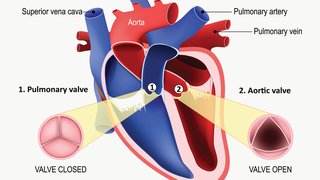
You have probably heard the terms “good cholesterol” and “bad cholesterol.” When your doctor measures your cholesterol level, he or she likely tells you your total cholesterol level – your LDL or “bad cholesterol” level, and your HDL or “good cholesterol” level. Your total cholesterol should be below 200, LDL cholesterol should be below 130, and HDL cholesterol should be above 40 for men and 50 for women.
But the medical community is beginning to rethink HDL cholesterol. While it is known that people who have higher levels of HDL cholesterol have a lower risk of heart disease, it is becoming clear that there is not a simple cause-and-effect relationship between the two. For instance, niacin is the best drug for raising HDL cholesterol levels, but taking niacin for this reason does not lower your risk of heart attacks or strokes.
Measuring cholesterol efflux
I’ve been looking into a new way of approaching HDL cholesterol that may be more useful for physicians and patients. I have been measuring something called “cholesterol efflux,” or cholesterol function. Cholesterol efflux is the ability of HDL to scoop up cholesterol particles from plaques in the heart’s blood vessels and move those particles to the liver for disposal.
Think of your HDL as garbage trucks and your blood vessels as major roadways. It’s not how many trucks you have that matters. It’s how good they are at picking up the trash that makes the difference between uncluttered roads or big pileups.
We’ve measured this cholesterol efflux function in thousands of Dallas County residents who participated in the Dallas Heart Study and investigated its relationship with the incidence of heart attacks. We found a clear and strikingly strong correlation.
The better the cholesterol efflux function, the lower the likelihood of heart disease. In fact, those in the top 25th percentile of cholesterol efflux function had a 65 percent reduced risk of heart attacks, strokes, or dying from heart disease. Interestingly, very much like the garbage truck analogy, it was the cholesterol efflux function and not the HDL cholesterol levels that predicted heart disease risk.
This new way of assessing HDL cholesterol isn’t ready for prime time yet. But in five years, in addition to the other numbers, your physician could be telling you your cholesterol “efflux” number.











